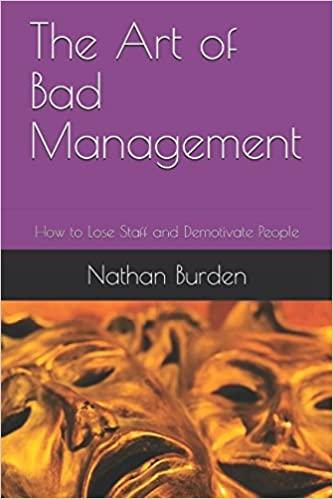Answered step by step
Verified Expert Solution
Question
1 Approved Answer
Q 1 - 5 . A dentist works from 9 am to noon, offering 1 - hour appointments on the hour for routine cleanings (
Q A dentist works from am to noon, offering hour appointments on the hour for routine cleanings the first patient arrives exactly at am the second patient arrives exactly at am The dentists schedule is always full, so she does not allow walkins. If she is free, the dentist begins the appointment when the patient arrives. The dentist finishes with each patient within minutes, and patients arrive at the beginning of their appointment.
Flag question: Question
Question pts
How long on average do patients wait in minutes
Flag question: Question
Question pts
The dentist hires an operations management specialist to analyze her appointment system. This analyst identifies that the time it takes the dentist to complete a cleaning is exponentially distributed with an average service time of min. How long, on average, do patients wait in minutes
Flag question: Question
Question pts
Why is a patients expected wait time different in the first versus the second scenario?
Group of answer choices
It isn't.
Because the dentist cannot fully balance the wait time caused by longerthanaverage appointments with shorterthanaverage service times.
Because variability in arrival times causes earlierthanaverage arrivals to wait.
Because uncertainty in service times causes the dentists utilization to increase.
None of the above
Flag question: Question
Question pts
An operations management analyst has found that the time it takes the dentist to complete a cleaning has an exponential distribution with an average service time of min. The operations management analyst also considers the possibility of removing appointments and having walkins only. The analyst estimates the arrival process would be distributed exponentially with an average interarrival time of minutes. How long would patients expect to wait in this new system minutes
Flag question: Question
Question pts
How many people should the receptionist expect to find in the waiting room in the scenario described in Q
Flag question: Question
Question pts
Consider a stable queueing system with m identical servers. Which formula correctly describes the system utilization?
Group of answer choices
Arrival rate service rate
Arrival rate m service rate
Arrival ratemservice rate
Arrival rate service rate
None of the above
Step by Step Solution
There are 3 Steps involved in it
Step: 1

Get Instant Access to Expert-Tailored Solutions
See step-by-step solutions with expert insights and AI powered tools for academic success
Step: 2

Step: 3

Ace Your Homework with AI
Get the answers you need in no time with our AI-driven, step-by-step assistance
Get Started


